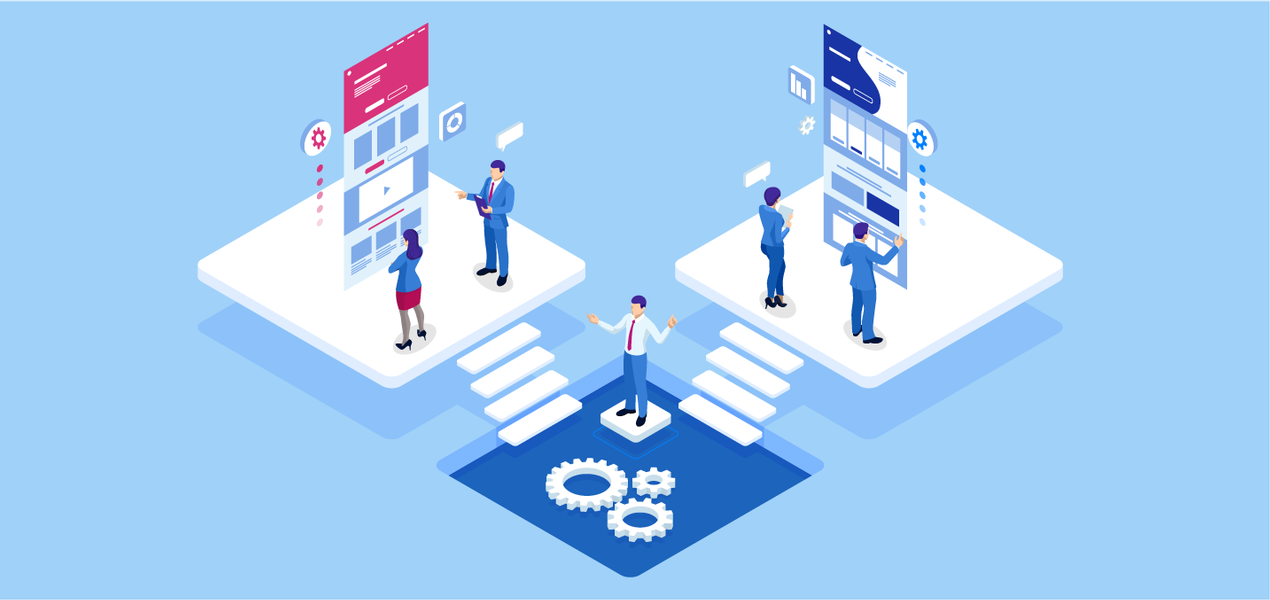Today’s customers expect personalized digital experiences. While traditional content management systems (CMS) have served us well, they often fall short in delivering true personalization. A headless CMS—where content management is separated from content presentation—offers the solution to this challenge.
Break Free from Traditional CMS Limitations
Traditional CMS is like a house where the rooms can’t be rearranged. Everything is fixed in place—the content, how it’s displayed, and how it’s delivered to users. This rigid structure makes personalization difficult and expensive. When you want to customize content for different users, you’re limited by built-in features that might not fit your needs or might slow down your website. The biggest problem? If you want to add new personalization tools, it’s like trying to renovate a house while living in it—complicated and potentially disruptive to your existing setup.
The Power of Headless Architecture in Modern DXP Solutions
A headless CMS is different. Imagine having a content warehouse (the back-end) that can send products (content) to any storefront (the front-end) through special delivery routes (APIs). This setup gives you the freedom to present your content however you want, wherever you want. When we talk about DXP solutions, headless CMS becomes even more valuable because it can easily connect with other digital tools and platforms. It’s like having a universal adapter that lets you plug in any tool you need for personalization.
Atomic Content Design: The Foundation of Personalized Experiences
With a headless CMS, you can break down your content into smaller, reusable pieces—like LEGO blocks. This approach, called atomic content design, lets you mix and match content pieces based on who’s viewing them. For example, one customer might see a product description emphasizing eco-friendly features, while another sees the same product highlighted for its cost-effectiveness. This level of CMS personalization becomes simple when your content exists as flexible, independent pieces rather than rigid pages.
Scaling Personalization Through Composable Architecture
A headless CMS enables you to build a technology stack that’s like a sophisticated sound system—each component (amplifier, speakers, equalizer) is separate but works together perfectly. You can connect your CMS with tools that track customer behavior, manage customer relationships, and analyze data. As your business grows, you can add or upgrade components without disrupting the entire system. This flexibility makes it easier to scale your personalization efforts as your needs evolve.
Implementing Personalization with Headless CMS
Using a headless CMS for personalization is like having a smart retail store that adjusts its displays for each customer. Start by gathering data about your visitors—their preferences, behaviors, and needs. Your headless CMS stores and manages the content, while connected tools help decide what content to show each visitor. The system can automatically adjust content based on factors like browsing history, location, or time of day, creating a unique experience for each visitor.
Conclusion
A headless CMS is more than just a modern way to manage content—it’s essential for delivering the personalized experiences today’s customers expect. As businesses strive to deliver better digital experiences, those using headless CMS as part of their DXP solutions will have a clear advantage in meeting customer expectations for personalized content.



